Your four brain characters and how they run your life
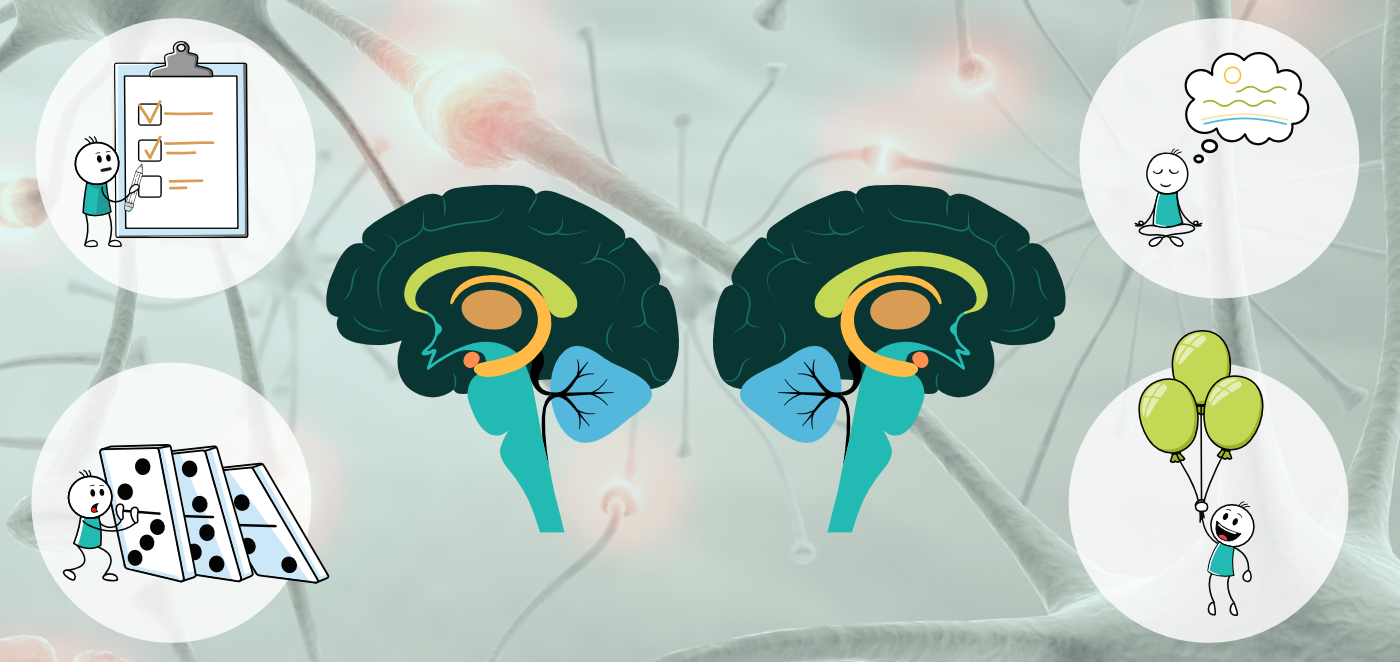
Do you like to control your environment and organize your life just so? Or do you prefer to fly by the seat of your pants and dive into new things with reckless abandon? Do you tend to dwell on your past and replay former aches, or do you prefer to live in the moment and feel like you are part of the flow? Or do you experience a little bit of each?
According to Jill Bolte Taylor, the neuroscientist and author of My Stroke of Insight and Whole Brain Living, you have all the above tendencies in you, although you lean into one of them more often. Each of those four ways of approaching life results from the activity of a specific group of cells within our brains. These clusters of cells in the brain process the same incoming information and react to it in their own particular way. That reaction depends on where they are located in the brain: the thinking or the emotional part, in the right or the left brain hemisphere.
The differences between the right and left brain hemispheres have been long touted in popular culture and were oversimplified, as often happens when ideas become mainstream. The right brain has been described as the creative one and the left brain as the logical one, but it is not at all that simple. Nowadays, it is widely accepted that both sides of the brain are necessary to perform most tasks; they just handle them a bit differently.
The main difference between the hemispheres is that the left hemisphere approaches most tasks linearly, as a sequence. J. B. Taylor writes: “The neurons in our left brain function linearly: they take an idea, compare that idea to the next idea, and then compare the by-product of those ideas to the next idea.” (1) Because of that, you know to put your socks on before your shoes. The neurons in your right hemisphere, on the other hand, are not arranged in a linear fashion. “Instead, our right hemisphere functions like a parallel processor, bringing in multiple streams of data that simultaneously reveal a single complex moment of experience.” (1). Because of that, we are able to have rich, multidimensional experiences.
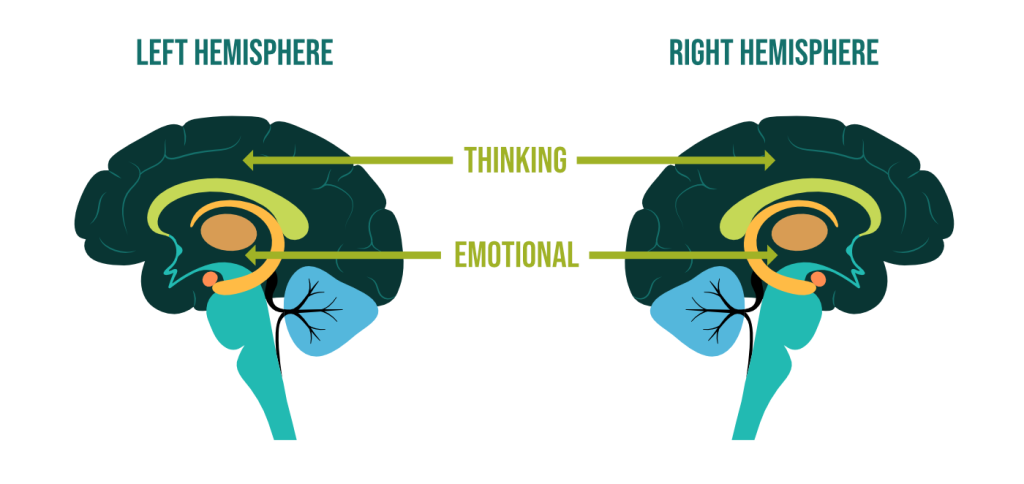 Each brain hemisphere has a thinking and an emotional part. We tend to think of ourselves as rational beings who feel, while, in reality, we are emotional beings who think. The emotional part of our brain, the limbic system, is evolutionarily older and more primal, and the thinking, rational part of our brain is more recent. “At any moment in time, there are pretty much only three things going on in our brain. We think thoughts, we feel emotions, and we run physiological responses to what we are thinking and feeling.” (1) But the thoughts and emotions we experience have distinctly different flavors depending on which hemisphere is more involved in the process. That is why it’s totally normal and expected to have conflicting thoughts and emotions – your brain might be analyzing your problem using four groups of cells that are entirely separate, which means that you might be looking at the situation from four different angles.
Each brain hemisphere has a thinking and an emotional part. We tend to think of ourselves as rational beings who feel, while, in reality, we are emotional beings who think. The emotional part of our brain, the limbic system, is evolutionarily older and more primal, and the thinking, rational part of our brain is more recent. “At any moment in time, there are pretty much only three things going on in our brain. We think thoughts, we feel emotions, and we run physiological responses to what we are thinking and feeling.” (1) But the thoughts and emotions we experience have distinctly different flavors depending on which hemisphere is more involved in the process. That is why it’s totally normal and expected to have conflicting thoughts and emotions – your brain might be analyzing your problem using four groups of cells that are entirely separate, which means that you might be looking at the situation from four different angles.
In her book Whole Brain Living: the Anatomy of Choice and the Four Characters that Drive Our Life, Jill Bolte Taylor calls those four different points of view the four characters. Each of those characters has a distinctive personality based on where it is located in your brain.
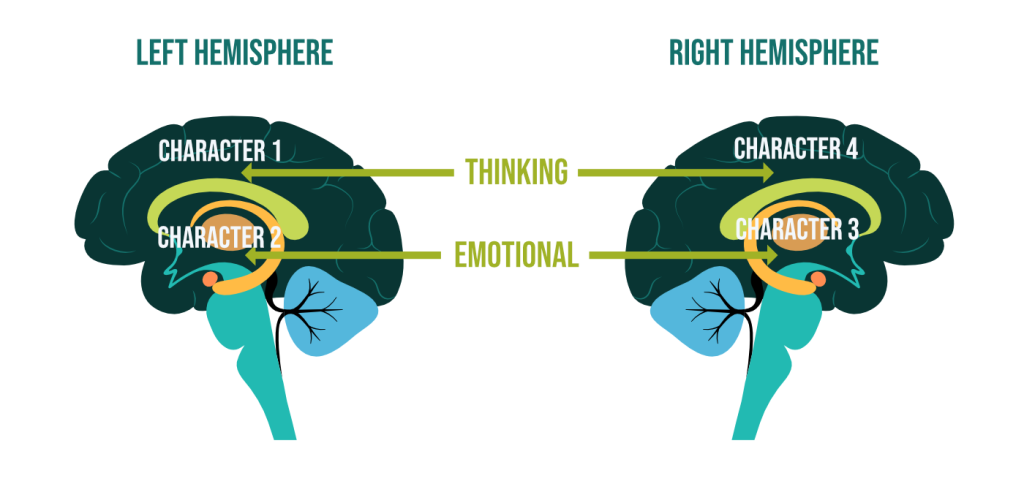
Character 1 is the thinking part of your left brain. It thrives on order, organization, and to-do lists. It’s analytical, concise, and busy.
Character 2 is the emotional part of your left brain. It is very dependent on the past, suspicious, selfish, and fear-based.
Character 3 is the emotional part of your right brain. It likes to dive into things without reservation; it is kind, creative, and reckless.
Character 4 is the thinking part of your right brain. It lives in the present moment and likes to be in the flow. It thinks in pictures, is community-oriented, and perceives things holistically.
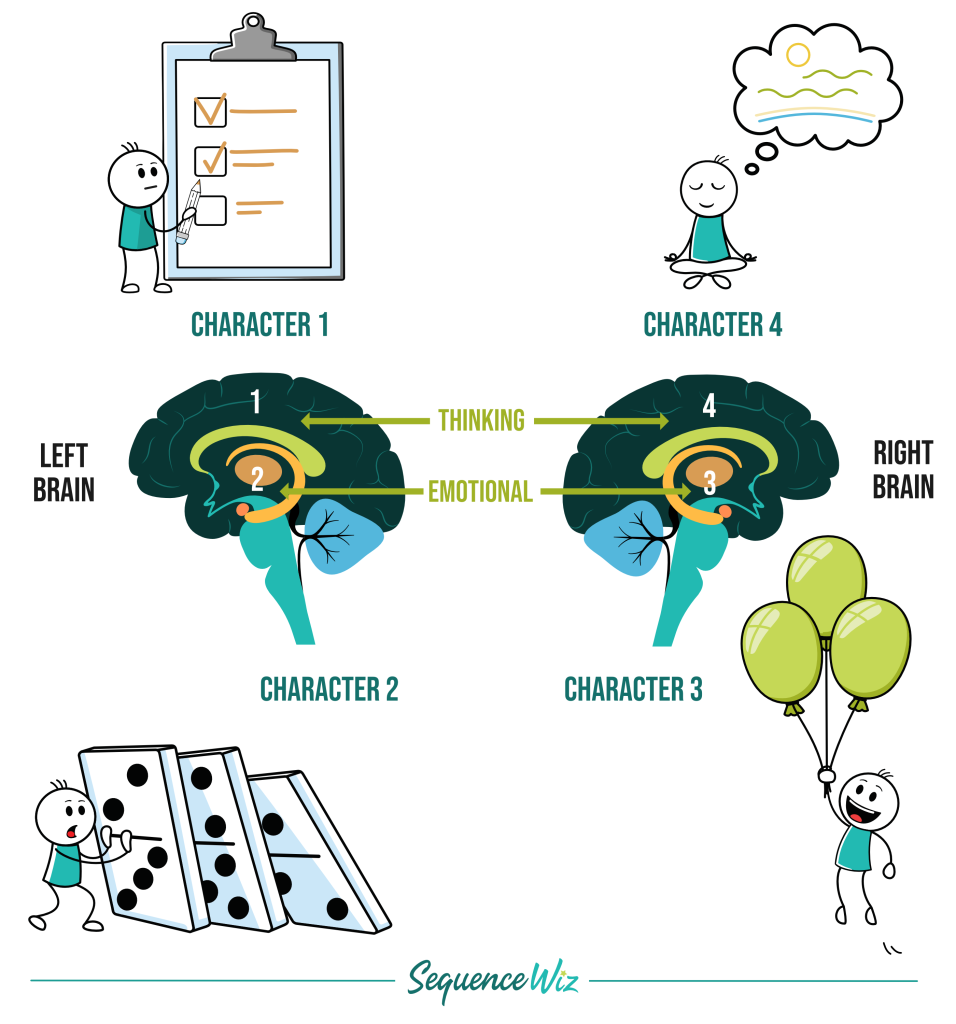
All four characters are part of your brain and want what’s best for you, but their understanding of what that looks like varies widely, leading to conflict and an occasional blowout. One of your characters might keep you up at night if it feels neglected, or bark at your spouse if it feels threatened, or get you into trouble when it throws caution to the wind. Understanding those characters helps us make sense of our thinking process and emotional reactions. It can also show us who runs the show and who gets suppressed. Once we know what to look for, we can choose which character to elevate and how to acknowledge and value each one of them.
Understanding the four brain characters is also very important in working with our yoga students. Everything we do in our work: what we say, how we present the information, which practices we choose, the kind of homework we suggest, and how we encourage students to stick with their practice depends on which character runs the show for your student. In addition, pacifying their strong characters and elevating their abandoned or suppressed parts will help restore balance and increase their life satisfaction.

Which brain characters are dominant in you and your students?
References
- Whole Brain Living: The Anatomy of Choice and the Four Characters That Drive Our Life by Jill Bolte Taylor (affiliate link)





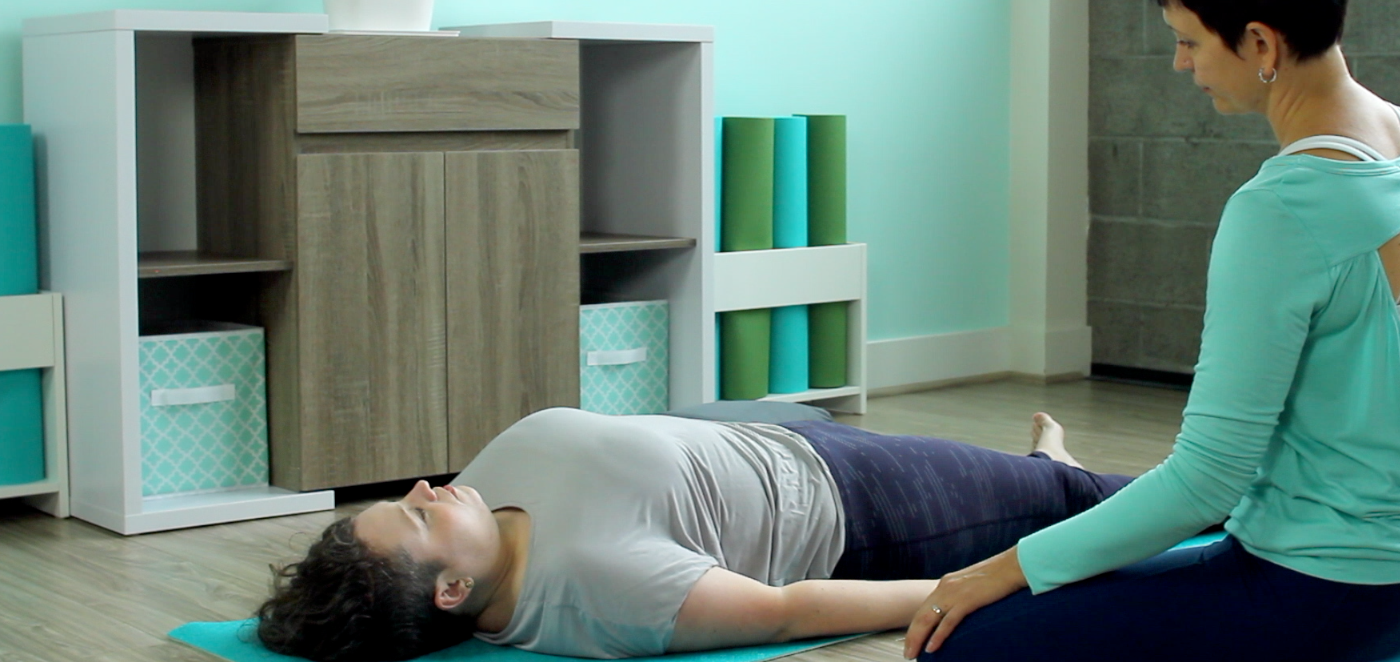




I am very excited to learn more about the brain. This article opens up a new perspective for my yoga practice and my meditation practice.
So happy to hear that it felt relevant to you, Linda!
Thank you for the dıscussion. How can I join?
Thank you for your interest in the book club! We will have it on the Sequence Wiz member site, where we do all our live events. The book club registration for the event will go live on Friday, January 27. We will make an announcement once it’s live. You do need to be a Sequence Wiz member to join the book club, and you can sign up for the 2-week free trial to join us. Hope to see you at the event!
What a fascinating read.
Thank you, Sue! The book is a true treasure (in my opinion) 🙂
Please email me to let me know how to join the Feb 10 book club discussion. Thank you!
Hi Louise! Thank you for your interest in the book club! We will have it on the Sequence Wiz member site, where we do all our live events. The book club registration for the event will go live on Friday, January 27. We will make an announcement once it’s live. You do need to be a Sequence Wiz member to join the book club, and you can sign up for the 2-week free trial to join us. Hope to see you at the event!
Just catching up to this…I have been using IFS for a couple of yrs and happy to say it works. So proud of Dick Schwartz who discovered this system and promotes as a self healing system. Brilliant of him to have available a healing system to the masses at no cost! The more who learn and work with their parts the better the world becomes…
Hi, Myra; thank you for sharing your experience; that is so great to hear! I agree with you; this approach seems to be so incredibly powerful and effective. It sure could help a lot of us release our burdens.